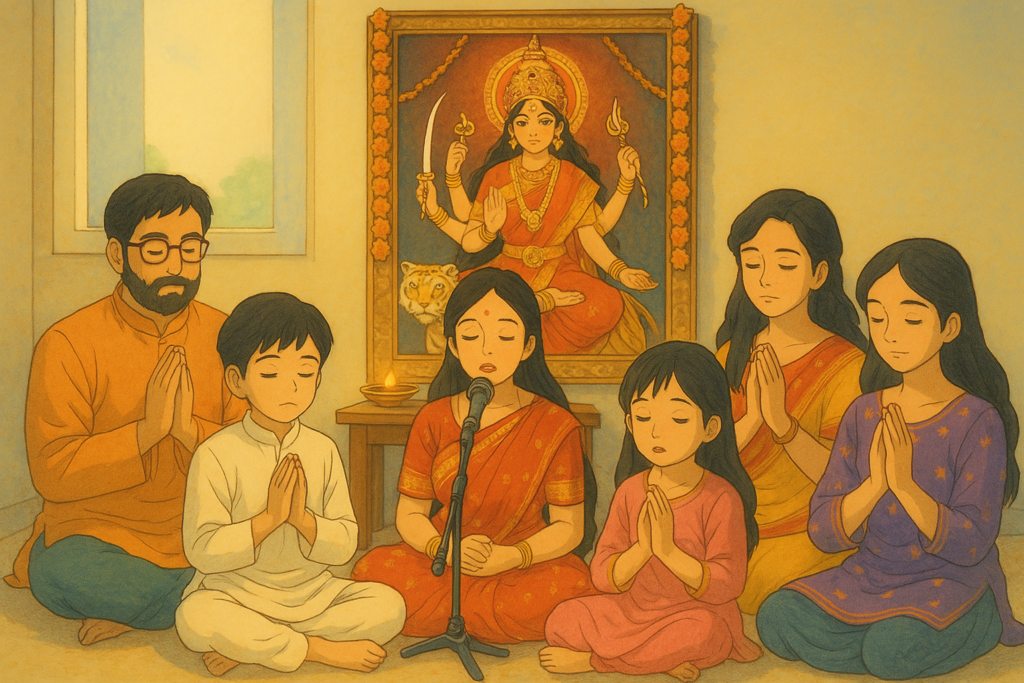The Power of Bhajans: Why Indian Immigrants Reconnect with Devotion in Canada

A Midlife Awakening in a Foreign Land
At 42, living in rural Ontario, surrounded by snow-covered pines rather than mango trees or temple bells, I’ve found myself reaching back toward something I thought I had gently set aside -my spiritual roots. Like many Indian immigrants, we came to Canada in my mid-twenties, focused on building a life, raising children, and settling into a new culture. But as the years pass, I feel the pull of my childhood growing stronger—especially the comforting rhythm of bhajans and temple life.
Last week, we did something simple but powerful: I lit a diya, gathered our kids, brought out my dholki, and sang. Not for show, not for religion—but for connection. A connection to God, to my culture, and to the part of me that I don’t want to lose.
Why Bhajans Matter More Than Ever
Bhajans are more than devotional songs. They are an emotional language, a form of prayer that doesn’t need perfect pitch or deep knowledge of Sanskrit. They are deeply personal and powerful tools for healing, reflection, and unity. In India, singing bhajans was second nature. There was always a temple within walking distance, especially during Navratri, when families gathered nightly to sing, clap, and worship.
In Canada, life is different. Temples are far apart, bhajan nights rare, and kids speak more English than Hindi. But the yearning to reconnect doesn’t fade. If anything, it grows stronger with time—especially as we seek peace in the chaos of daily life.
Why NRIs Feel the Need to Reconnect Spiritually
As immigrants, we spend our early years focused on stability—getting a job, finding housing, raising our kids, and adapting. But somewhere in midlife, after achieving those basic goals, we begin to look inward. We ask deeper questions: Who am I beyond my roles? What legacy am I passing on? Where do I find peace?
Here are a few reasons this reconnection happens so commonly among NRIs:
- We long for inner peace amid work stress and fast-paced family life.
- Childhood memories of temple visits, bhajans, and festivals come flooding back.
- We want to pass on values and culture to our children in a meaningful way.
- There’s a spiritual gap in the West that many of us feel deeply.
- Music becomes a universal language to bridge generations and cultures.
For example, I may not expect my 6-year-old to sing every line of a bhajan perfectly, but I notice him clapping along, asking questions like “What does Radha mean?”—that’s a start. My 14-year-old may not light the diya, but she lingers nearby when I play devotional music. That’s a quiet kind of connection.
Making Bhajans a Part of Canadian Family Life
Bringing bhajans into our daily lives doesn’t have to be elaborate. A five-minute aarti after dinner, a small havan occasionally, or playing bhajans on Spotify while driving the kids to school—all these little practices create a spiritual rhythm that grounds the whole family.
I created a small bhajan book with 25 favorites and started using the dholki again—things I hadn’t done in years. At first, it felt like a solo practice, but slowly, my kids joined in, even if just by listening. The point isn’t to make them fluent in every word—it’s to help them feel the emotion, the intention, and the sacred energy that bhajans bring into a home.
Building a Spiritual Legacy for the Next Generation
Passing on Indian traditions isn’t about forcing rituals—it’s about inviting curiosity. It’s about letting our children see that we find comfort and strength in something bigger than ourselves. Over time, they may not remember every bhajan, but they will remember that their parents made time for prayer, music, and sacred moments.
In this Western world, where everything moves fast and the pressure to perform is high, bhajans offer a counterculture—a chance to pause, reflect, and be still. When we sing, we aren’t just performing a tradition. We are nurturing a legacy.
One that our children, even if they grow up with more hockey sticks than temple bells, will carry in their hearts.